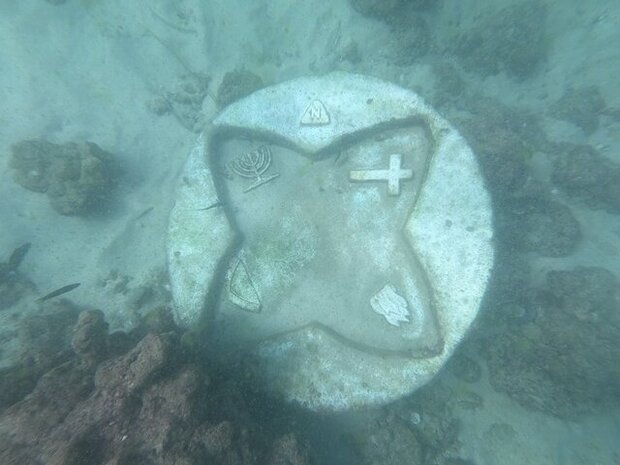Archaeologist finds bizarre object in Persian Gulf

TEHRAN – An Iranian archaeologist has accidentally discovered a bizarre object while diving into the coral seabed of the Persian Gulf in southern Iran.
Initial estimates suggest the sunken object may have a spiritual significance as it bears religious shapes and motifs.
“Coincidentally, while diving on the shores of the Persian Gulf near Qeshm Island, I found an unknown object on the seabed. At first, I thought it was made of stone,” ISNA quoted archaeologist Samaneh Lashgari as saying on Saturday.

“In secondary and more specialized inspection, it was found that the object is something similar to fiberglass with a white-colored layer, which is, geometrically, in the form of a cylindrical disk.”
A significant feature of the object is the existence of religious motifs such as a cross, a Jewish-shaped candlestick, a flame, and an arched structure all of which are engraved on a four-petal flower, she explained.
The object will undergo a thorough examination by a team of archaeologists and cultural heritage experts under the supervision of the provincial department of cultural heritage and tourism, the report said.

Qeshm Island is a heaven for eco-tourists as it embraces wide-ranging attractions such as the Hara marine forests and about 60 villages dotted mostly across its rocky coastlines. The island also features geologically eye-catching canyons, hills, caves, and valleys, most of which are protected as part of the UNESCO-tagged Qeshm Island Geopark, itself a haven for nature-lovers.
The Persian Gulf is a shallow, epi-continental sea approximately 1,000 km long and 200-350 km wide, narrowing to about 60 km across at the Straits of Hormuz. According to Encyclopedia Iranica, to date, no Neolithic remains have been found anywhere along the Persian Gulf coast of Iran. The earliest archaeological remains yet identified on the coast of Iran consist of sherds of Mesopotamian Ubaid type picked up by M. E. Prickett and A. Williamson on the surface of Halilah, a prehistoric site on the Bushehr peninsula.
AFM
Leave a Comment